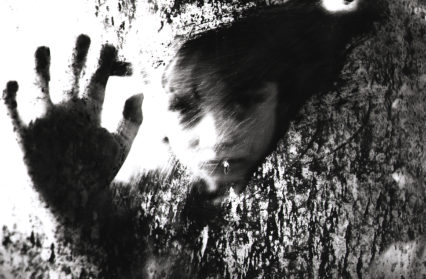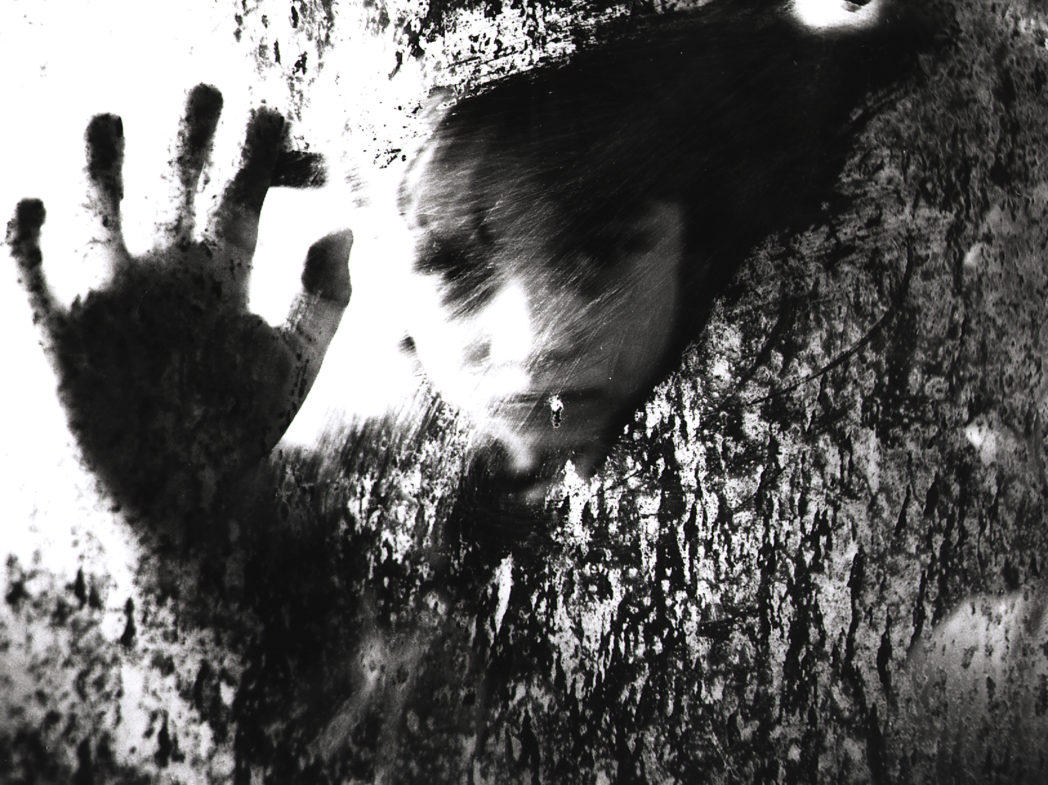Karen Ingham is an interdisciplinary artist-designer and filmmaker. She gained an MPhil and a PhD with the University of Wales for her research into historical and contemporary art and science collaborations in the biomedical domain. She is an awardee of a Major Creative Wales Arts Prize and of AHRC and Wellcome Trust awards. Karen Ingham’s work is internationally exhibited and disseminated and has been shown at the ICA London, the Berlin, Sundance, and Edinburgh Film Festivals, Somerset House London, Waag Amsterdam, and The National Museum and Gallery of Wales amongst other venues. She has several publications in distribution with Dewi Lewis Publishing, Ffotogallery Publications, Seren Books and CG Publishing.
Karen Ingham: It’s wet, cold and windy. The month is January, meaning that we have lost the light, quite literally, for the next two months. Llwyn Erch Idwal, the smallholding I share with my partner and son and where my studio is based, hides in its own secluded valley as part of the wider Lliw Valley in Upper Swansea. Even though we have replaced the generator with mains electricity and have worked extensively on renovating the old, dark farmhouse and buildings, at this time of year everything seems lost in the winter gloom. It’s four in the afternoon but feels much later as the boys, my five years old son Harley and his six years old cousin Jules, play in the now abandoned broken down Land Rover. Jules presses his hand against the damp window, darkened by the shadows on the moss stained glass. His face is mask like, surreal, beguiling, and disturbing. He watches me as I watch him, sensing perhaps that I will take a photograph of him with my ‘silly’ camera (a Pentax 6×7), which children love because of its oversized proportions.
I take the picture, isolating this moment in time. Jules in Abandoned Land Rover was to become a key image in ‘Lost’ (1998) part of ‘At The Edge of The Garden’, the body of work that I exhibited with Ffotogallery later that year. It was something of a turning point in my practice as it moved me from working predominantly in film with organisations like the British Film Institute, BBC Wales, and Chapter (the reason I moved to Wales) and returned me to earlier lens-based arts concepts and approaches. ‘Lost’ laid the foundations for many of the dominant themes and philosophical entanglements that I am still engaged in today. The work did not so much help me ‘find my artists voice’ but it did help me ‘refine’ it.
‘Lost’ was in a sense a distillation of essence. It was about:
Stories: the use of narrative, fiction and semi-fiction, constructions of identity and belonging. In her review for ‘Lost’ the writer and theorist Val William’s remarked “Karen Ingham is a fabulist, a teller of fairy stories of which we know only part of the plot.” (72:1998) A sentiment echoed recently by Ken Arnold in his introduction to ‘Wonder Chamber’ (12:2012) where he describes the process of making the project ‘Narrative Remains’: “…her stories are polyvalent with overlapping layers of fictive narrative, history, scientific insight and philosophical contemplation.”
Place: I am not rooted having lived in many places in the world with a family that moved frequently and without much regard to the educational or emotional needs of their children. Therefore notions of ‘place’ and ‘belonging’ frequently feature in my practice – psycho-geography, cultural geography, location, dis-location – ideas explored in projects like ‘Paradise Park’ (2000), ‘Ha Ha: Margam Re-visited’ (2002), ‘Un-reliable Truths’ (2008), ‘Homesick’ (2015) and most recently in the ‘Pembrokeshire Drovers’ film commission (2016).
Transience and fragility: the memento mori and the vanitas are also recurring themes that emerged in ‘Lost’ with the fear of loss, harm, illness or abduction of one’s children and a sense of how transient life can become. The image reproduced here, Jules in Abandoned Land Rover is characteristic of many of the images in ‘Lost’, which grew from the murder of toddler Jamie Bulger, which happened when my son was only a few months old. The memento mori reappeared shortly after ‘Lost’ in ‘Death’s Witness’ (2000) with the death of my father and later in ‘Vanitas: Seed-Head’ (2005).
Masquerade: hiding and revealing different layers of meaning – not only through illusory visual representations but also through the artist’s ‘intent’ and the interpretation of the subsequent spectator. ‘Lost’ was a photographic narrative where menace seemed to hide behind every dark corner but where in fact the threat was cathartically projected: the Barthesian power of the photographic punctum to emotionally move us. This sense of masquerading and mimicry is prevalent in much of my practice, from ‘Piece of Mind Mask’ and ‘Wonder Chamber’ (2012) to the present ‘Facescapes’ (2015 –ongoing).
The flip side of the hidden is the reveal and I am intrigued by what the viewer can’t see. For example, Jules in the darkened moss covered car looks out on an expansive natural landscape rich in wild flora and fauna. We look into the constructed unease of his photographic frame, while he looks out to a much lighter and less threatening environment. This world, where I worked on managing the ancient meadows, informed ‘Pollinator Frocks’ (2011- ongoing), which uses bio-mimicry and hybrid design to take the viewer into an insect’s worldview.
Darkness: emotional and psychological anxieties, mental health, depression. Darkness is a necessary component of my practice and something that I have never shied away from. The darkness explored in ‘Lost’ has developed into my current research for ‘Darkness Enlightened’ (a hybrid approach involving cross fertilisation of art and science), which at first glance seems wildly at odds with this earlier photographic contemplation, but is nevertheless rooted in the same enquiry.
I moved from Llwyn Erch Idwal three years ago but the images in ‘Lost’ and the period they represent are a deeply embedded aspect of my artistic ‘journey’. The boys playing in the old Land Rover are now young men and are part of the group most at risk of depression and suicide in the UK – young men in their teens and early twenties. These are the dark corners I’m exploring now, working in collaboration with clinical researchers and neuroscientists at Swansea University. ‘Lost’ has eventually led me to the ‘real’ monsters that lurk in dark corners, where boys are sometimes lost forever.
You can find Karen Ingham’s work at http://kareningham.org.uk
Caption information:
Jules in Abandoned Land Rover, in ‘Lost’ and ‘At The Edge of The Garden’ (Ffotogallery, Cardiff and touring, 1998): medium-format b/w analogue photograph, various sizes.
You might also like…
Mary Lloyd Jones is an internationally renowned painter and print-maker, and author. As she explains in this revealing article, her work draws on the influence of ancient cultures and languages, and holds a particular preoccupation with the context of her own landscape.













